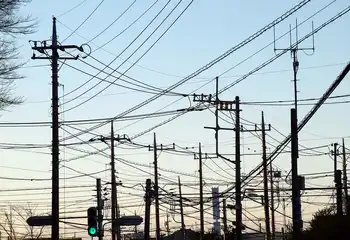The rallying cry for electric fuel
SAN JOSE, CALIFORNIA - Speaking at the Plug-in 2008 conference in San Jose, Calif., Andy Grove, former Chairman & CEO, Intel Corporation, added his voice to the chorus of government and business leaders calling for the rapid development and deployment of large numbers of plug-in hybrids.
Grove called the current energy situation a “clear and present danger” to the United States. He wants to see a task force of utility companies, automakers, high technology companies and academia develop a plan to put 10 million plug-in hybrids on the road — and present that plan to the new president on his first day in office.
Grove sees electricity as the ideal transportation fuel because itÂ’s "fungible," meaning that it can be created in many different ways, transported easily and used in different ways.
GroveÂ’s challenge was immediately answered by General Motors and the nonprofit Electric Power Research Institute (EPRI), which represents more than 30 of the top electric utilities in the United States and Canada. Jon Lauckner, GM vice president of global program management, announced the collaboration at Plug-in 2008. Lauckner is leading GMÂ’s effort to launch the Chevrolet Volt, the most high-profile plug-in hybrid, scheduled for release in November 2010.
HybridCars.com spoke with Lauckner on the eve of the conference to discuss how the EPRI collaboration will help the auto industry make the difficult transition from gas-powered engines to using electricity as the primary fuel for cars and trucks. Here is an extended excerpt from the interview:
"First, we need to harmonize the technical interface between the vehicle and the grid — so that when people plug vehicles in, they charge in a way that’s most efficient in terms of cost with the right peaks and valleys on the grid. That’s number one.
"Number two is public education. We usually don’t think about driving in terms of cost per mile. But when you are talking about fuels — electricity versus gasoline — you can’t talk about miles per gallon. We talk about cost per mile. There’s a re-education that needs to take place.
"At current fuel prices, a car that gets 30 miles per gallon fuel economy costs about 14 cents a mile in fuel costs alone. An electric vehicle of the same size and the same mass, everything else being equal, costs 2 cents a mile on peak, and 1 cent per mile with off-peak rates.
"Somebody who drives an average amount of miles per year — let’s say 12,000 miles — the net cost savings for using electricity as a fuel, as compared to gasoline, is at least $1,700 dollars. That’s the gasoline that you don’t buy, netted out against the electricity that you do buy. Obviously, that number varies depending what you pay for electricity per kilowatt-hour, and the price of gasoline at any particular moment. As the price of gasoline goes up, that advantage just gets bigger.
"That by the way, puts no value on the CO2 that’s not generated, thanks to electricity, which is yet another advantage. But we’re just talking about economics that you can count — but there is an economic value for not generating CO2, and other tailpipe emissions.
"Number three is the need to present a common front in terms of public policy. We need to find a reasonable incentive to level the playing field between the technology that exists today, and has an 80 to 100 year install base of capacity and intellectual property and development — against the new technology that’s in its infant stage.
"For example, for as good as the Chevy Volt battery package is — and we’re using the latest and greatest battery technology — the Volt battery pack contains the energy equivalent of about a gallon of gasoline. The Volt battery pack is about six feet long across the length of the ‘T,' and the top of the ‘T’ is about three feet. It weighs about 400 pounds. And yet it has the same amount of energy in that rather large battery pack as one gallon of gasoline that weighs about six pounds. That’s a fact.
"So, do we have more to go in terms of battery technology? You bet. But you have to walk before you can run. WeÂ’re out there working on the very best battery pack, yet when you compare it to the incumbent fuel, gasoline, you can see that there are some very significant factors that favor gasoline as an automotive fuel. ItÂ’s not a conspiracy. ItÂ’s a simple fact. Gasoline is a very effective automotive fuel. Now, it has other side effects that we donÂ’t like, but when you view it in terms of one metric, energy density, liquid fuel is a very good fuel.
"Now, we need to develop the other fuel, which is electricity, and we will. But itÂ’s going to take a little while for us to build the same type of advancement as the one thatÂ’s been in place for the past 80 to 100 years."
Related News

Britain Goes Full Week Without Coal Power
LONDON - For the first time in a century, Britain weaned itself off of coal consumption for an entire week.
Reuters reported that Britain went seven days without relying on any power generated by coal-powered stations.
The accomplishment is symbolic of a shift to more clean energy sources; Britain was home to the first coal-powered plant back in the 1880s.
Today, Britain has some aggressive plans in place to completely eliminate its coal power generation permanently by 2025. In addition, Britain aims to cut its total greenhouse gas emissions by 80 percent from 1990 levels within the next 30 years.
Natural gas was the…




